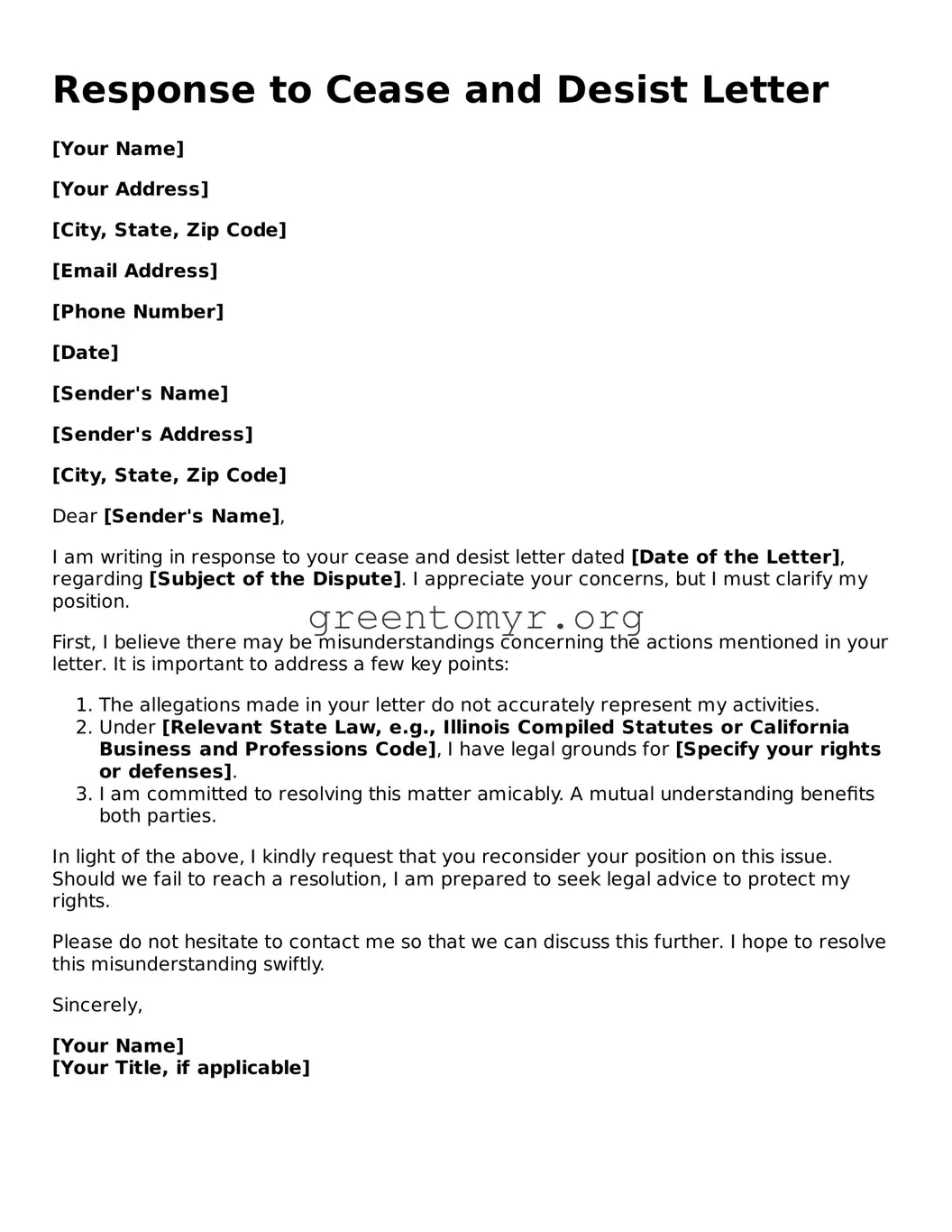Response to Cease and Desist Letter
[Your Name]
[Your Address]
[City, State, Zip Code]
[Email Address]
[Phone Number]
[Date]
[Sender's Name]
[Sender's Address]
[City, State, Zip Code]
Dear [Sender's Name],
I am writing in response to your cease and desist letter dated [Date of the Letter], regarding [Subject of the Dispute]. I appreciate your concerns, but I must clarify my position.
First, I believe there may be misunderstandings concerning the actions mentioned in your letter. It is important to address a few key points:
- The allegations made in your letter do not accurately represent my activities.
- Under [Relevant State Law, e.g., Illinois Compiled Statutes or California Business and Professions Code], I have legal grounds for [Specify your rights or defenses].
- I am committed to resolving this matter amicably. A mutual understanding benefits both parties.
In light of the above, I kindly request that you reconsider your position on this issue. Should we fail to reach a resolution, I am prepared to seek legal advice to protect my rights.
Please do not hesitate to contact me so that we can discuss this further. I hope to resolve this misunderstanding swiftly.
Sincerely,
[Your Name]
[Your Title, if applicable]
